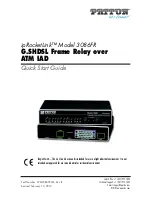
41
Shared keys are network-specific, and each network can have up to 4 different
shared keys. The name of a shared key is the same as the name of the network.
An access point only transmits data using the active key, but can receive data from
wireless stations using any of the four shared WEP keys.
Because the shared WEP keys are network-specific and user-independent, they can
be saved in a file together with profiles. Users can import profiles from a file or a
smart card that include shared keys and that have been created by their system
administrator.
Shared keys can be used as the only form of WEP security or used together with a
personal key.
If a wireless LAN includes a Nokia A032 Wireless LAN Access Point that is
configured to use open authentication, you can still use shared WEP keys.
Personal keys
Each wireless station can have an individual, personal WEP key. Personal keys are
used for providing additional security for wireless connections. They are usually
created by system administrators, who distribute them to users. An access point
uses a different key for each wireless station.
There are two types of personal keys, and the difference between the keys is the
type of information that is used for identifying the user:
Unlike shared keys, personal keys are not network specific, and therefore cannot
be saved together with profiles. They can, however, be separately saved in a file.
Note:
Personal keys can be used only with the infrastructure operating mode.
Ad hoc networks use shared keys only.
Creating and editing shared keys
Shared keys are usually created by a system administrator. In the ad hoc operating
mode,
the person who is creating the ad hoc network decides on a password and
then distributes it to others. The system uses this password to create a shared
WEP key.
Note:
In the infrastructure operating mode, the same key value must be
entered both at the access point side of the network and on the wireless
station.
1
On the Profiles page, select the profile you want to modify and click
Edit
.
USER-SPECIFIC
Uses an identifier that the users can create
themselves.
STATION-SPECIFIC
Uses the MAC address of the wireless LAN card to
identify the user.
















































